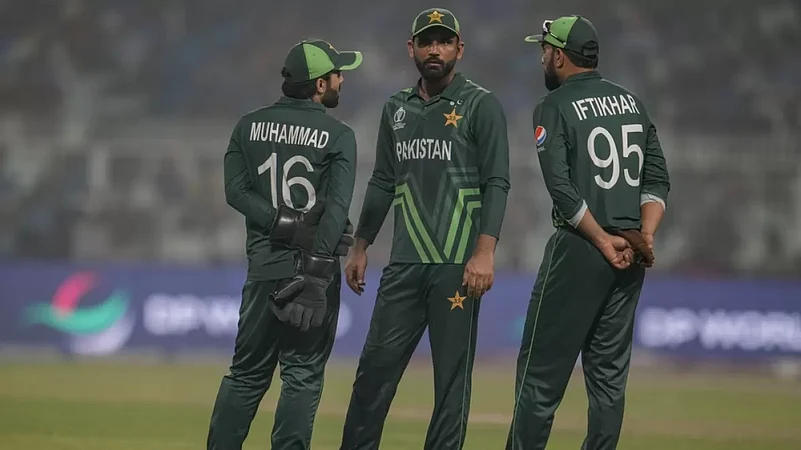An outdated batting approach, dismal performance of the spinners, lack of back-up options and selection blunders have led to another early World Cup exit for the forever unpredictable Pakistan unit. Heading into the Asia Cup that preceded the World Cup in India, Pakistan was the top-ranked ODI side but like it is the case often, the rankings don't paint the whole picture. (Match Blog |Scorecard | Full Coverage)
By the end of Asia Cup, Pakistan were left with major concerns but the management chose to back the same set of players for the World Cup and ended up with an underwhelming campaign.
Pakistan's last semifinal appearance in the ODI World Cup came way back in 2011 when India beat them on their way to glory.
PTI looks back at the shortcomings of the Babar Azam-led side, which squandered a golden opportunity to make an impact on Indian shores.
Top-order performance
Pakistan had carried an out of form Fakhar Zaman to the World Cup but he was dropped after the team's opener against the Netherlands in Hyderabad. Abdullah Shafique joined Imam-Ul-Haq at the top and did alright but the latter's performance graph kept declining, hurting the team's cause.
With Pakistan struggling to make the semis, Zaman was brought back at Iman's expense and he did display the x-factor he is known for but it was a tad too late.
Average returns from captain and leading batter Babar Azam also hurt the team badly. Babar did end up with four fifties in nine innings but by his own admission, he could not live up to the standards he has set for himself.
After touching down in India after seven years, Babar had a great platform to leave a legacy both as skipper and batter but he heads back home not sure about his leadership future.
Going forward, the top-three will need to adapt a more-aggressive approach to meet the current demands of the game.
Abject failure of Shadab Khan and Co
PCB technical committee chief Misbah-Ul-Haq has revealed that they had advised making changes to the spin department following the performance of Shadab Khan and Mohammad Nawaz in the Asia Cup.
Pakistan went for stability but their frontline spinners let the team down, highlighting how selection calls cost them.
Getting wickets in the middle-overs is key to success in Indian conditions but Shadab and Co. cut a sorry figure. Both Shadab and Nawaz ended with only two wickets each in the entire tournament.
Usama Mir was given his opportunity in the middle of the tournament but he too could not deliver under pressure. By the end of the league stage, such was the state of affairs that had Babar had more confidence in abilities of part-timer Iftikhar Ahmed than his main spinners including vice-captain Shadab.
Pedestrian pace attack
Shaheen Afridi, Naseem Shah and Haris Rauf were considered a fearsome trio not so long ago but the injury to Naseem laid bare the chinks in the pace attack.
Afridi did end up with 18 wickets in nine games but his opening spell lacked venom in the absence of his preferred new-ball partner Naseem.
Rauf has pace and variations that make him a lethal T20 bowler but the tournament showed he remains a work in progress in the 50-over format. With express pace and little movement in the air or off the pitch, Rauf became easy meat batters.
The great Wasim Akram has advised Rauf go through the rigours of first-class cricket to become an all-format bowler.
Hasan Ali opened the bowling with Afridi in majority of the games but with his medium pace, he was not able to put the batters in too much discomfort.
The absence of a world class pacer in Naseem's absence has raised serious questions over Pakistan's bench strength. The lack of options in the spin-department is also a big concern.
Way forward?
Bench strength cannot be created overnight but Misbah has made a few suggestions that can be implemented in the near future. Pakistan are scheduled to tour Australia next month.
"We don't have world class spinners both in ODI and red ball formats. There are no new ball options after Naseem and Shaheen.
"In batting, the way cricket is going, we have some who meet the modern day requirement but we need to develop more. We need to identify domestic talent and groom for the highest level at the National Cricket Academy.
"The standard of domestic cricket is not that strong so one can't straight away perform in international cricket. There is a need to conduct specialised camps to bridge the gap," Misbah told A Sports.
















